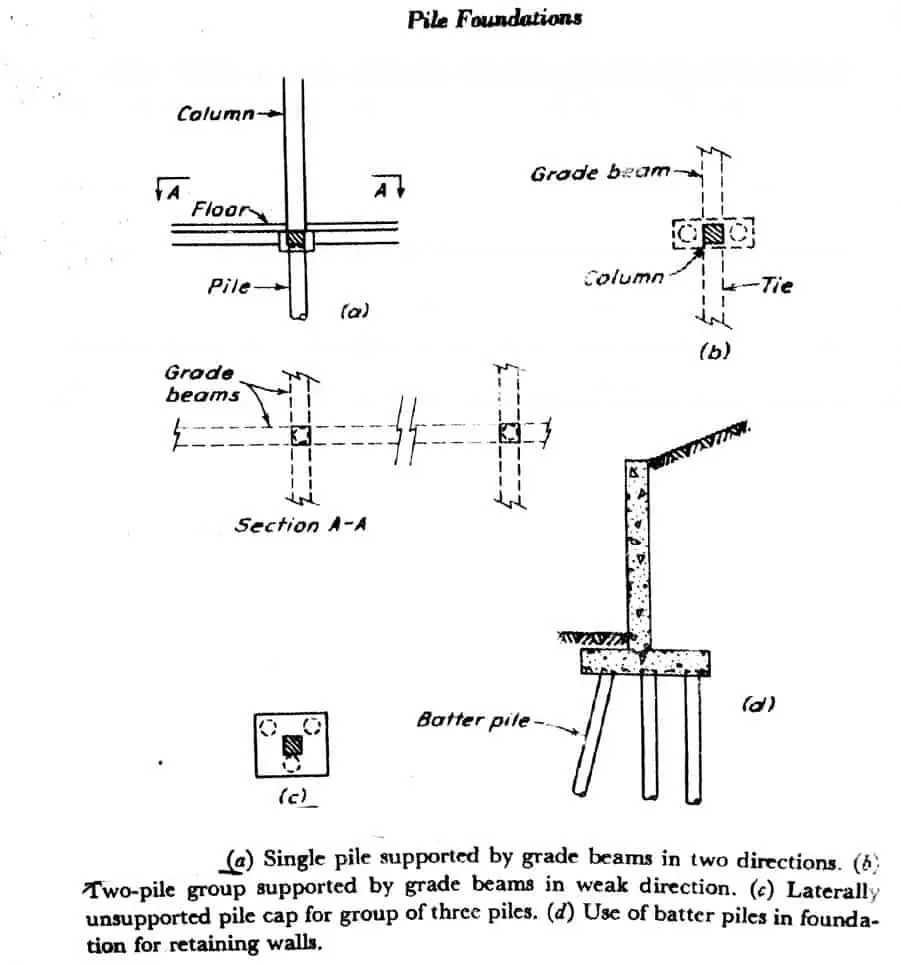When the soil beneath the level at which a footing or raft would normally be established is too weak or too compressible to provide adequate support, the loads are transferred to more suitable material at greater depth by means of piles or piers. The distinction between the two is somewhat arbitrary.
What Are The Piles That Is Used In Pile Foundations
Piles are the structural members of the small cross-sectional area compared to their length, and are usually instated by a driver consisting of a hammer or a vibrator. They are often grouped into clusters or rows, each containing enough piles to support the load delivered by a single column or wall.

Important Factors To Consider During Pile Design
A lightly loaded column may, in some instances, require only a single pile. However, since under field conditions the actual position of a pile may be as much as several inches from its planned location, an eccentric loading can hardly be avoided. Consequently, the heads of single piles are usually braced in two directions by grade beams. If only two piles are needed, their heads may be connected by a concrete cap braced by grade means in only one direction, perpendicular to the line joining the two piles Fig.1(b). Clusters containing three or more piles are provided with reinforced concrete caps, as shown in Fig.1(c), and are considered stable without support by grade beams.

Vertical piles may also be used to resist lateral loads as for example, beneath a tall chimney subject to wind. Compared to their axial capacity, the lateral capacity is usually small. Where large lateral loads are to be used (Fig.1d.) Batters of 4 horizontal : 12 vertical represent the greatest inclination that can be achieved with ordinary driving equipment. The economy usually favors smaller inclinations even if more piles have to be battered.
Pile Foundation Functions
Piles are used if the bearing capacity of soil at shallow depth is not enough to withstand the structural load. So the piles are driven to transfer the loads from the structure to the high bearing capacity soil/rock stratum. The main functions of using pile foundations are listed below in short.
- To transfer the load from the structure to the foundation at a greater depth where the bearing capacity of the soil is efficient to withhold the structural loads.
- Pile controls the soil settlement which can be accompanied by surface foundations.
- Piles are used to increase the safety factor for high loaded structures.
- Piles enable the scope of construction in very low bearing capacity soils.
